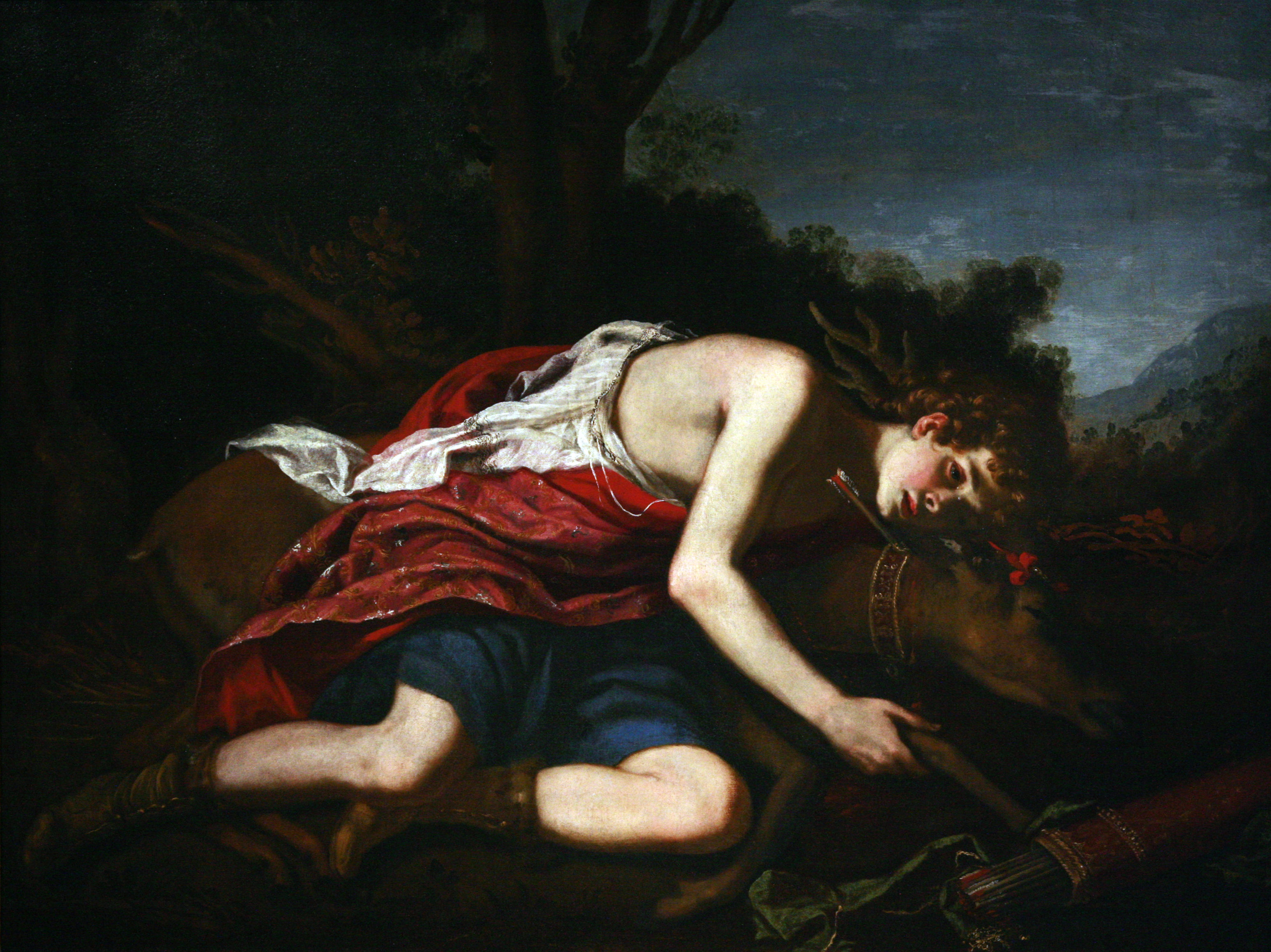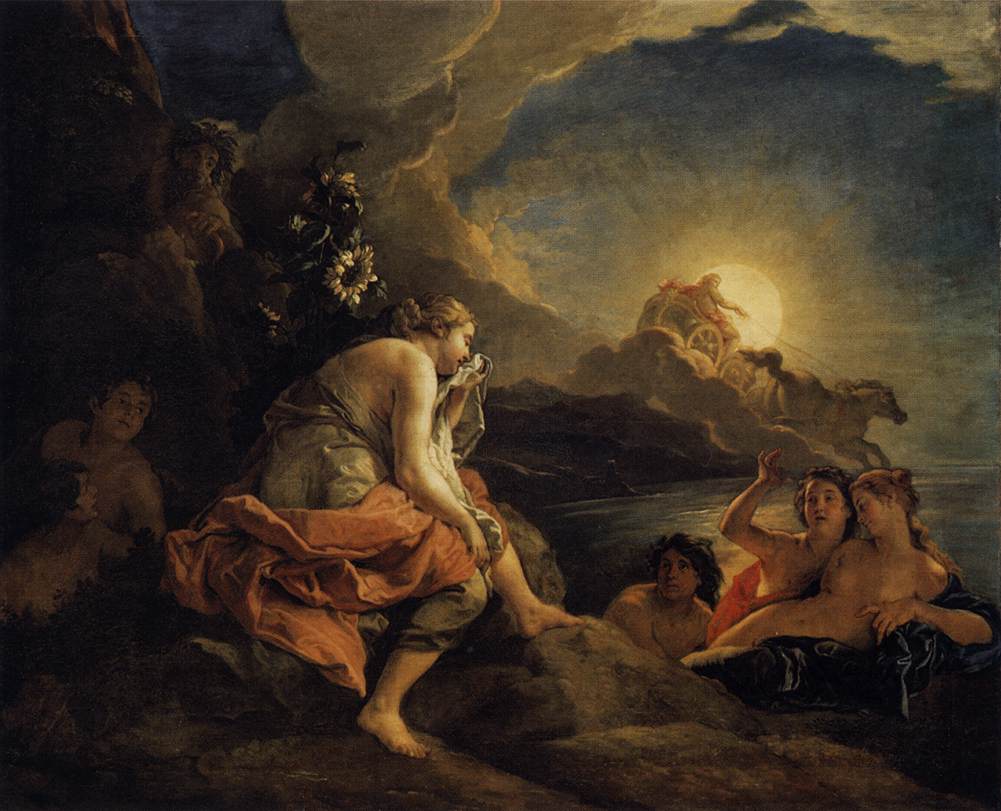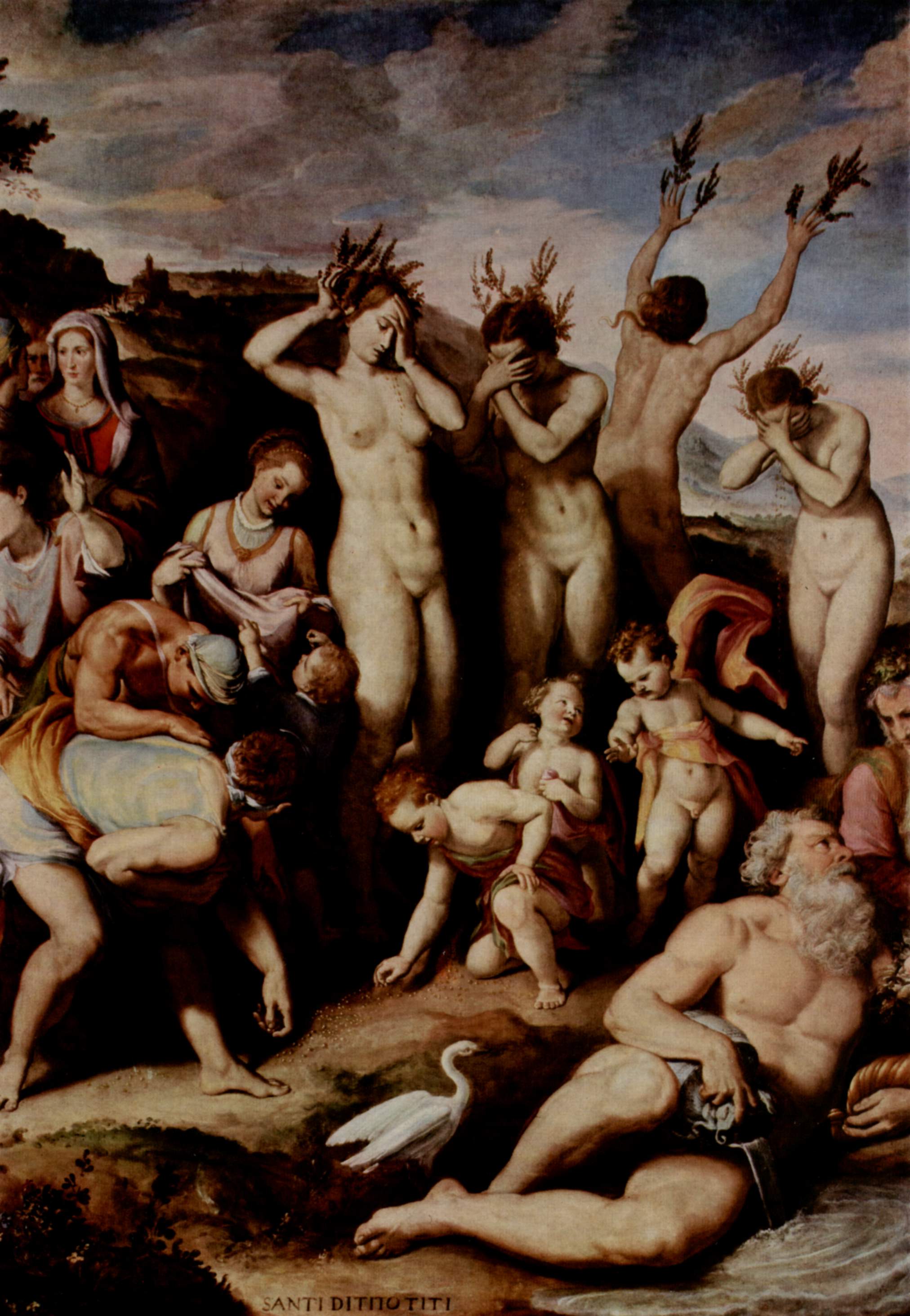|
Myrice (mythology)
In Greek mythology, Myrice ( ; grc, Μυρίκη, Muríkē, tamarix ) is a minor figure from the island of Cyprus. Like both of her siblings Myrrha and Amaracus, she was transformed into a plant bearing her name. Family She was the daughter of Cinyras, a king of Cyprus, and thus sister to Myrrha and Amaracus, thus aunt/half-sister to Adonis. Mythology The mournful Myrice was transformed into a tamarix tree (' in ancient Greek), possibly by Aphrodite, as the tamarisk was her sacred tree. The implication seems to be that Myrice was grieving the death of her kinsman Adonis, who was gored by a boar during hunting. Additionally, a Hellenistic and Roman-era cult dedicated to Myricaean Apollo (, "Apollo of the Tamarisk") is attested on the Northeastern Aegean island of Lesbos. See also * Melus (mythology), Melus * Heliades * Pelia (mythology), Pelia * Clytie (Oceanid), Clytie * Cyparissus * Alcyone and Ceyx Notes References Bibliography * * * * * * * M ... [...More Info...] [...Related Items...] OR: [Wikipedia] [Google] [Baidu] |
Greek Mythology
A major branch of classical mythology, Greek mythology is the body of myths originally told by the ancient Greeks, and a genre of Ancient Greek folklore. These stories concern the origin and nature of the world, the lives and activities of deities, heroes, and mythological creatures, and the origins and significance of the ancient Greeks' own cult and ritual practices. Modern scholars study the myths to shed light on the religious and political institutions of ancient Greece, and to better understand the nature of myth-making itself. The Greek myths were initially propagated in an oral-poetic tradition most likely by Minoan and Mycenaean singers starting in the 18th century BC; eventually the myths of the heroes of the Trojan War and its aftermath became part of the oral tradition of Homer's epic poems, the '' Iliad'' and the '' Odyssey''. Two poems by Homer's near contemporary Hesiod, the '' Theogony'' and the '' Works and Days'', contain accounts of the genes ... [...More Info...] [...Related Items...] OR: [Wikipedia] [Google] [Baidu] |
Melus (mythology)
Melus ( grc, Μήλος, Mḗlos, apple, sheep) in Greek mythology is a minor figure, a childhood friend of Adonis, Aphrodite's beloved, who is connected to apples via his metamorphosis into one. Mythology Melus was born on Delos, but moved to Cyprus. When the ruler of Cyprus, Cinyras, saw that Melus was of sound character, he made Melus a companion to his son Adonis. Melus eventually married a woman named Pelia, who was kin to Cinyras and Adonis, and had a son by her, also named Melus. The child was raised inside the sanctuary of Aphrodite. When Adonis was slain by a boar during hunting, Melus was so distraught over his loss that he ended his life by hanging himself from an apple tree, which took his name thereafter. Pelia, not standing the loss of her kin and her husband, took her life in the same way. After Aphrodite's own period of mourning was over, she turned Melus into an apple fruit, and Pelia into a dove. Their son, Melus, was sent back to Delos, where he founded the ci ... [...More Info...] [...Related Items...] OR: [Wikipedia] [Google] [Baidu] |
Women In Greek Mythology
A woman is an adult female human. Prior to adulthood, a female human is referred to as a girl (a female child or adolescent). The plural ''women'' is sometimes used in certain phrases such as "women's rights" to denote female humans regardless of age. Typically, women inherit a pair of X chromosomes, one from each parent, and are capable of pregnancy and giving birth from puberty until menopause. More generally, sex differentiation of the female fetus is governed by the lack of a present, or functioning, SRY-gene on either one of the respective sex chromosomes. Female anatomy is distinguished from male anatomy by the female reproductive system, which includes the ovaries, fallopian tubes, uterus, vagina, and vulva. A fully developed woman generally has a wider pelvis, broader hips, and larger breasts than an adult man. Women have significantly less facial and other body hair, have a higher body fat composition, and are on average shorter and less muscular than men. Th ... [...More Info...] [...Related Items...] OR: [Wikipedia] [Google] [Baidu] |
Mythological Cypriots
Myth is a folklore genre consisting of narratives that play a fundamental role in a society, such as foundational tales or origin myths. Since "myth" is widely used to imply that a story is not objectively true, the identification of a narrative as a myth can be highly controversial. Many adherents of religions view their own religions' stories as truth and so object to their characterization as myth, the way they see the stories of other religions. As such, some scholars label all religious narratives "myths" for practical reasons, such as to avoid depreciating any one tradition because cultures interpret each other differently relative to one another. Other scholars avoid using the term "myth" altogether and instead use different terms like "sacred history", "holy story", or simply "history" to avoid placing pejorative overtones on any sacred narrative. Myths are often endorsed by secular and religious authorities and are closely linked to religion or spirituality. Many soc ... [...More Info...] [...Related Items...] OR: [Wikipedia] [Google] [Baidu] |
Clarendon Press
Oxford University Press (OUP) is the university press of the University of Oxford. It is the largest university press in the world, and its printing history dates back to the 1480s. Having been officially granted the legal right to print books by decree in 1586, it is the second oldest university press after Cambridge University Press. It is a department of the University of Oxford and is governed by a group of 15 academics known as the Delegates of the Press, who are appointed by the vice-chancellor of the University of Oxford. The Delegates of the Press are led by the Secretary to the Delegates, who serves as OUP's chief executive and as its major representative on other university bodies. Oxford University Press has had a similar governance structure since the 17th century. The press is located on Walton Street, Oxford, opposite Somerville College, in the inner suburb of Jericho. For the last 500 years, OUP has primarily focused on the publication of pedagogical texts and ... [...More Info...] [...Related Items...] OR: [Wikipedia] [Google] [Baidu] |
Oxbow Books
__NOTOC__ An oxbow is a U-shaped metal pole (or larger wooden frame) that fits the underside and the sides of the neck of an ox or bullock. A bow pin holds it in place. The term "oxbow" is widely used to refer to a U-shaped meander in a river, sometimes cut off from the modern course of the river that formed it. Developed form Its upper ends pass through a purpose-drilled hole through the bar of the yoke that is held in place into the yoke with a metal screw or key, called a bow pin. Where wood is used it is most often hardwood steamed into shape, especially elm, hickory or willow. A ring, enabling left/right movement controlled from the centre, is attached by a plate to the centre underside of a wooden yoke to enable a pair of bullocks/oxen to be chained to any other pairs in a team and to be hitched to the load behind the animal team. Uses of the yoke and oxbows The load is a plough or any other dragged, non-motorised, field agricultural machinery. Alternative Wooden st ... [...More Info...] [...Related Items...] OR: [Wikipedia] [Google] [Baidu] |
Alcyone And Ceyx
In Greek mythology, Alcyone or Halcyone (; grc, Ἀλκυόνη, Alkyónē derived from grc, ἀλκυών, alkyṓn, kingfisher, label=none) and Ceyx (; grc, Κήϋξ, Kḗÿx) were a wife and husband who incurred the wrath of the god Zeus. Mythology Alcyone was a Thessalian princess, the daughter of King Aeolus of Aeolia, either by Enarete or Aegiale. She was the sister of Salmoneus, Athamas, Sisyphus, Cretheus, Perieres, Deioneus, Magnes, Calyce, Canace, Pisidice and Perimede. Later on, Alcyone became the queen of Trachis after marrying King Ceyx. The latter was the son of Eosphorus (often translated as Lucifer). The couple were very happy together in Trachis. According to Pseudo-Apollodorus's account, this couple often sacrilegiously called each other "Zeus" and "Hera". This angered Zeus, so while Ceyx was at sea (in order to consult an oracle, according to Ovid), he killed Ceyx with a thunderbolt. Soon after, Morpheus, the god of dreams, disguised as Ceyx, ... [...More Info...] [...Related Items...] OR: [Wikipedia] [Google] [Baidu] |
Cyparissus
In Greek mythology, Cyparissus or Kyparissos (Ancient Greek: Κυπάρισσος, "cypress") was a boy beloved by Apollo or in some versions by other deities. In the best-known version of the story, the favorite companion of Cyparissus was a tamed stag, which he accidentally killed with his hunting javelin as it lay sleeping in the woods. The boy's grief was such that it transformed him into a cypress tree, a classical symbol of mourning. The myth is thus aetiological in explaining the relation of the tree to its cultural significance. The subject is mainly known from Hellenized Latin literature and frescoes from Pompeii. No Greek hero cult devoted to Cyparissus has been identified. Family Cyparissus was the son of Telephus and thus the grandson of Heracles, and his story is set in Chios. Mythology As initiation myth The myth of Cyparissus, like that of Hyacinthus, has often been interpreted as reflecting the social custom of pederasty in ancient Greece, with the boy ... [...More Info...] [...Related Items...] OR: [Wikipedia] [Google] [Baidu] |
Clytie (Oceanid)
Clytie (; grc, Κλυτίη, Klutíē), or Clytia (; grc, Κλυτία, Klutía) is a water nymph, daughter of the Titans Oceanus and Tethys in Greek mythology. She is thus one of the 3,000 Oceanid nymphs, and sister to the 3,000 Potamoi (the river-gods). According to the myth, Clytie loved the god of the sun Helios in vain, but he left her for another woman, the princess Leucothoe, under the influence of Aphrodite, the goddess of love. In anger and bitterness, she revealed their affair to the girl's father, indirectly causing her doom as the king buried her alive. This failed to win Helios back to her, and she was left lovingly staring at him from the ground; eventually she turned into a heliotrope, a violet flower that gazes at the Sun in its diurnal journey. Clytie's story is mostly known from and fully preserved in Ovid's narrative poem ''Metamorphoses'', though other brief accounts and references to her from other authors survive as well. Etymology Her name, spel ... [...More Info...] [...Related Items...] OR: [Wikipedia] [Google] [Baidu] |
Pelia (mythology)
Pelia ( grc, Πελία, Pelia) in Greek mythology is a minor Cypriot figure, kin to Adonis, who played a role in a minor myth. Mythology Pelia had an unspecified kinship with Cinyras, the king of Cyprus, and his son Adonis. Cinyras married her to Melus, a childhood friend of Adonis from Delos. The couple had a son together, whom they also named Melus. The child was raised inside the sanctuary of Aphrodite herself, lover of Adonis. But when Adonis was slain by a boar during hunting, Melus was so distraught over his loss that he ended his life by hanging himself from an apple tree, which took his name thereafter. Pelia, not standing the loss of her kin and her husband both, took her life in the same way. After Aphrodite's own period of mourning was over, she turned Melus into an apple/apple tree, and Pelia into a dove. As for their son, Melus, who was now the only surviving member of Cinyras' family, he was sent back to Delos, where he founded the city Melon. The sheep there a ... [...More Info...] [...Related Items...] OR: [Wikipedia] [Google] [Baidu] |
Heliades
In Greek mythology, the Heliades (Ancient Greek: Ἡλιάδες means 'daughters of the sun') also called Phaethontides (meaning "daughters of Phaethon") were the daughters of Helios and Clymene, an Oceanid nymph. Names According to one version recorded by Hyginus, there were seven Heliades: Merope, Helie, Aegle, Lampetia, Phoebe, Aetheria and Dioxippe. Aeschylus's fragmentary ''Heliades'' names Phaethousa and Lampetia, who are otherwise called daughters of Neaera. A scholiast on the ''Odyssey'' gives their names as Phaethusa, Lampetia and Aegle. Mythology Their brother, Phaëthon, died after attempting to drive his father's chariot (the sun) across the sky. He was unable to control the horses and fell to his death (according to most accounts, Zeus struck his chariot with a thunderbolt to save the Earth from being set afire). The Heliades grieved for four months and the gods turned them into poplar trees and their tears into amber. According to some sources, the ... [...More Info...] [...Related Items...] OR: [Wikipedia] [Google] [Baidu] |
Lesbos
Lesbos or Lesvos ( el, Λέσβος, Lésvos ) is a Greek island located in the northeastern Aegean Sea. It has an area of with approximately of coastline, making it the third largest island in Greece. It is separated from Asia Minor by the narrow Mytilini Strait. On the southeastern coast lies the island's capital and largest city, Mytilene, whose name is also used as a moniker for the island. The regional unit of Lesbos, with the seat in Mytilene, comprises the islands of Lesbos, Chios, Ikaria, Lemnos, and Samos. Mytilene is also the capital of the larger North Aegean region. The population of the island is 83,068, a third of whom live in the capital, while the remainder is distributed in small towns and villages. The largest are Plomari, Kalloni, the Gera Villages, Agiassos, Eresos, and Molyvos (the ancient Mythimna). According to later Greek writers, Mytilene was founded in the 11th century BC by the family Penthilidae, who arrived from Thessaly and ruled the city ... [...More Info...] [...Related Items...] OR: [Wikipedia] [Google] [Baidu] |

.jpg)

.jpg)

.jpg)



